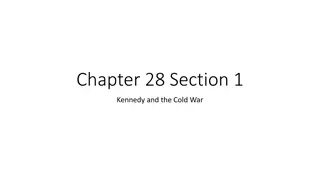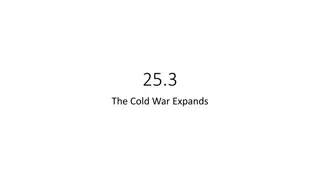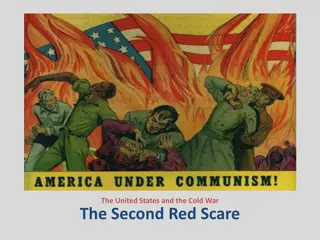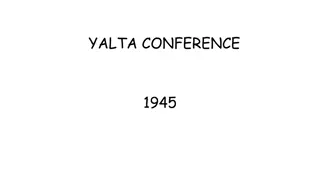Cold War Historical Interpretations Timeline
Explore different historical interpretations of the Cold War through three main perspectives: Traditional/Orthodox, Revisionist, and Post-Revisionist/Contemporary/Post-1991. The Traditional/Orthodox view blames Stalin for the breakdown of relations, the Revisionist view points to mutual provocations, and the Post-Revisionist perspective emphasizes mutual misperceptions and shared responsibility between the superpowers. The Contemporary/Post-1991 view highlights new insights gained after the collapse of the Soviet Union, focusing on the role of allies in shaping Cold War history.
Download Presentation

Please find below an Image/Link to download the presentation.
The content on the website is provided AS IS for your information and personal use only. It may not be sold, licensed, or shared on other websites without obtaining consent from the author. Download presentation by click this link. If you encounter any issues during the download, it is possible that the publisher has removed the file from their server.
E N D
Presentation Transcript
Historical Interpretations Copy following for timeline
Traditional/Orthodox Revisionist
Post Revisionist Contemporary/Post 1991
Traditional/Orthodox This view follows the official US interpretation of the beginning of the Cold War The breakdown of relations was a direct result of Stalin's violation of the Yalta accords, the imposition of Soviet- dominated governments on an unwilling Eastern Europe, and aggressive Soviet expansionism Stalin was trying to build up a Soviet empire in accordance with Marxist theory USA had to act defensively
Revisionist This view sees : USA commitment to maintaining an 'open door' for American trade in world markets USA provocations and imperial ambitions were at least equally to blame Truman had not understood how much Russia had suffered in WWII Onset of Cold War due to 'dollar diplomacy' and needs of capitalism Stalin was a pragmatic leader, needed security The use of the Atomic bomb was the first move by the USA in the Cold War
Post Revisionist This view claims that neither side can be held solely responsible for the Cold War Focused on mutual misperception, mutual reactivity and shared responsibility between the superpowers America didn't understand Stalin's fears and need to defend himself after the war Two military establishments, USA and USSR, were both seeking world domination Both superpowers overestimated the strength and threat of the other.
Contemporary/Post 1991 This view sees that the collapse of the Soviet Union and the Eastern European bloc in the early 1990s allowed scholars and historians (from both East and West) to finally gain access to archival evidence that was inaccessible to researchers throughout the Cold War. Such unprecedented opportunities gave rise to a new field in history. This new perspective values the importance of the superpowers' allies during the Cold War, instead of just at the superpowers themselves.
Key historians George Kennan, Herbert Feis, Thomas A. Bailey William A. Williams, Walter LaFeber, Gar Alperovitz, Joyce and Gabriel Kolko
John Lewis Gaddis, Thomas G. Paterson, Ernest May Eduard Mark Tony Smith























